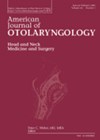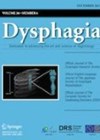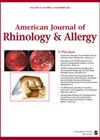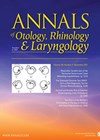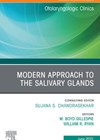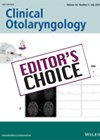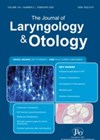
Journal Reviews
Gastrostomy tube dependence following TORS
Transoral robotic surgery (TORS) for oropharyngeal squamous cell carcinoma (OPSCC) is now a well-established treatment modality for early (T1-T2) disease. Accumulating evidence suggests that one of its main benefits relative to conventional chemoradiotherapy is superior long-term functional outcome, especially with...
Predicting the nature of swallowing deficits caused by surgical resection of the tongue?
Patients treated surgically for cancer of the tongue are expected to have difficulty in eating, drinking and swallowing. The authors of this paper report on a cohort of 106 patients in their practice who had surgical resection as primary treatment....
When to operate on a patient without chronic disease?
As ENT surgeons, we spend a lot of time managing chronic rhinosinusitis, so a review and update on the management of the acute disease is always helpful. The standard medical treatment of antibiotics, nasal steroids and nasal decongestants are reported...
Sublingual gland tumour resection
This paper from South Korea analyses the pathology arising from 20 malignant sublingual gland tumours. Adenoid cystic carcinoma followed by mucoepidermoid carcinomas were the most common. Tumour invasion into the lingual nerve was detected in 40% of cases, and into...
Publishing - a predictor of an academic career in ENT?
Achieving a publication as a medical student renders ENT trainees six times more likely to publish again during postgraduate surgical training. But how does this correlate with subsequent subspecialty fellowship training and a career in academia? Johnson et al examined...
A new era in the treatment of recalcitrant nasal polyps?
Chronic rhinosinusitis with nasal polyps (CRSwNP) can be difficult to treat effectively in patients with aggressive or recalcitrant disease. Omalizumab (Xolair) is a monoclonal anti-IgE antibody with proven benefits for patients with moderate/severe asthma and CRSwNP, but this study looks...
Alcohol and hearing
Alcohol is a well-known central nervous system depressant. Individual reactions to alcohol might vary, but the connection between alcohol consumption and tolerance to loud noise or difficulties in communication in noisy environments are well-observed phenomena; for example, at evening parties....
Is there a limitation for excising parapharyngeal tumours transorally?
The parapharyngeal space is a complex anatomical space bounded medially by the oropharynx and laterally by the mandible. It is conceptualised as an inverted pyramid extending from base of skull above to the hyoid bone below. The space is divided...
Remote consultations: bringing ENT in to the 21st century
The ongoing peaks and troughs of the COVID-19 pandemic have imposed unprecedented challenges on day-to-day healthcare provision that we all took as given across the globe prior to spring 2020! The pandemic has, in many ways, made us push boundaries...
Coblation for lingual haemangiomas
Haemangiomas are benign vascular tumours characterised histologically by a marked proliferation of blood vessels. They can be either congenital or acquired, and can affect the tongue, both within the oral cavity and the oropharynx. A variety of interventions exist for...
CRS vs. migraine: which is the culprit in most headaches?
‘Sinus headache’ is a common diagnosis according to patients and primary care physicians, but relatively infrequent in the eyes of otolaryngologists. This study examines 104 patients with a primary headache syndrome (PHS) and 130 patients with CRS, looking at SNOT-22...
Is there evidence to support early discharge of patients with tonsillitis, quinsy and epistaxis?
The COVID-19 pandemic, with its unprecedented pressures on the NHS, demands changes in the management of common ENT emergencies. In this review article, information has been gleaned from 22 relevant articles on how this can be done. The Portsmouth tonsillitis...

